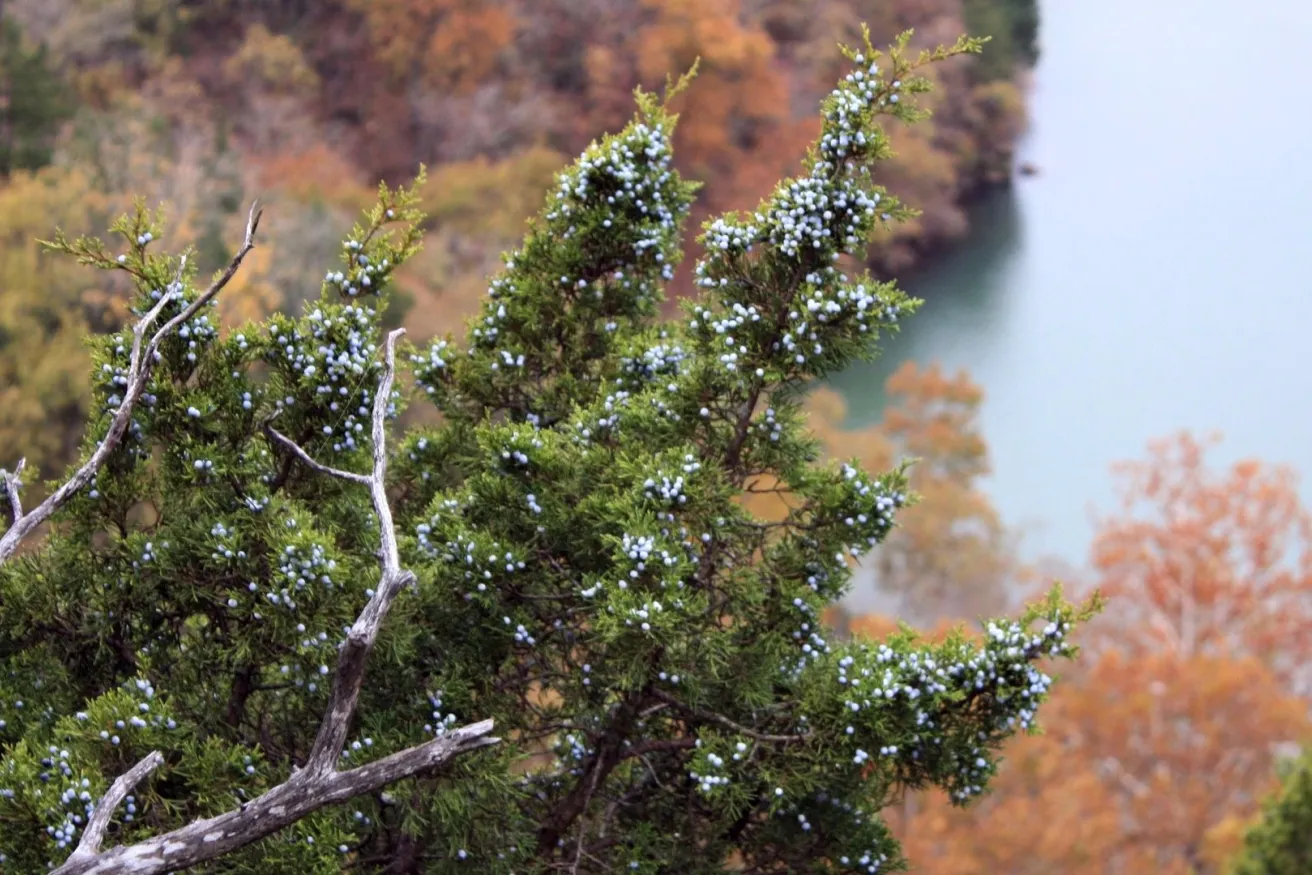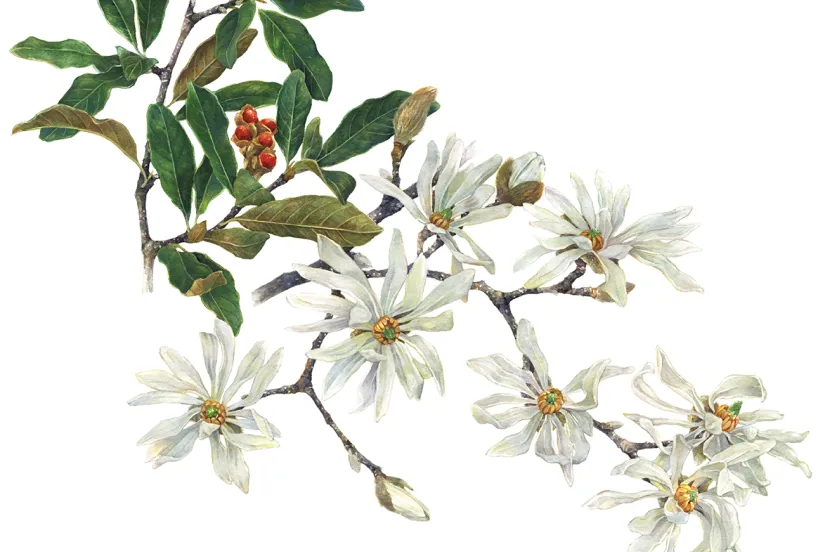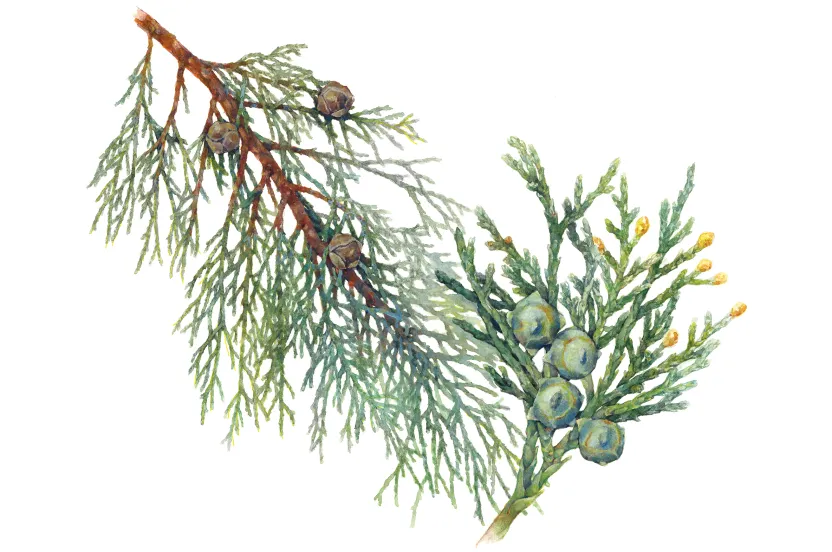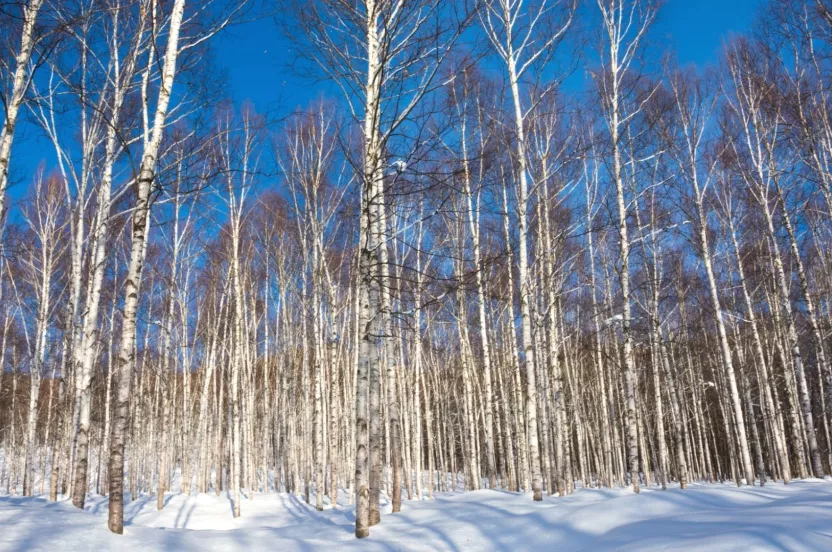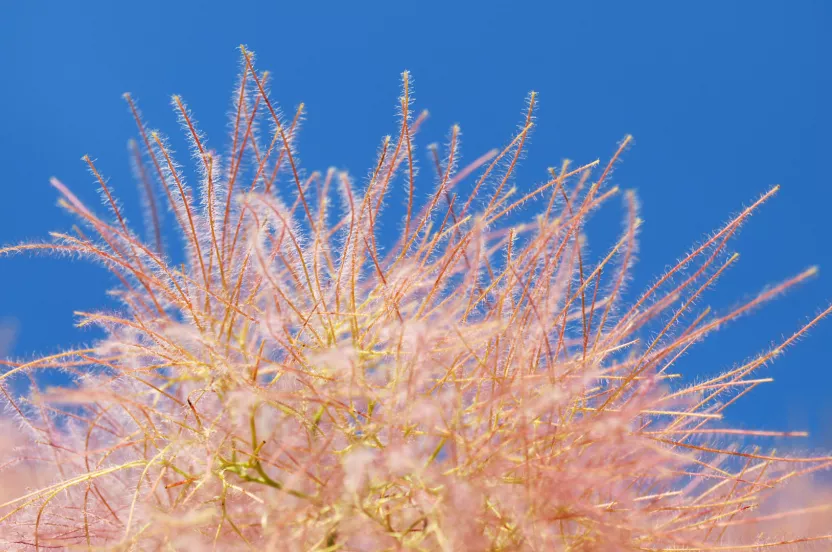Celebrate Arbor Day with 15% off our shop and nursery. Use code LETSGROW. SHOP NOW
Juniperus virginiana
Eastern redcedar is the most wide-spread conifer in eastern North America. It is also the most drought-resistant and one of our most controversial trees. to Robert Lemmon, author of The Best Loved Trees of America, eastern redcedar is “a friendly sort of tree, a lover of pasture hills and farm hedgerows, happy in the broad, free spaces of the open country…” Naturalist Donald Peattie called it “a favorite in old country graveyards, where, to the imagination of our forebears, perhaps, its finger seemed to point to heaven; its evergreen boughs spoke symbolically of life eternal.”
Whether it points to heaven or not, it is definitely a pioneer species that often leads the rest of sun-loving species into abandoned fields. It gets help from a large number of birds that relish its gin-scented seeds. In fact, you will often find rows of the trees beneath wires and close to fences or other busy perches.
Redcedars also mark the doorways and gates of both humble homes and elegant estates. This is a tough, long-lived species that can help anchor farm soil windbreaks on the hot, dry plains. It can adorn parks, add beauty to urban yards with the narrowest of spaces, and has even been used as a street tree.
But not everyone loves this misnamed member of the juniper (not cedar) clan. Eastern redcedar is the alternate host that enables disease-causing fungi to complete their life cycles and plague apples, crabapples, hawthorns, and quinces. It is a bane to the commercial orchardist. Homeowners, too, should think twice about planting this tree if it will be near other species it can infect. However, with diligence, the fungus can be easily spotted on individual trees and removed by pruning before any harm is done.
With the exercise of caution, the virtues of this species outweigh its potential problems. It is an important tree with an interesting history. It surely deserves consideration as a tree to plant for both beauty and utility.
Read Top 5 Evergreens Sold through the Arbor Day Tree Nursery
Redcedars Transform Soil
Eastern redcedars have an interesting relationship with soil. Although the species is often associated with alkaline soils, it can and sometimes does establish itself on acidic soils. When this happens, the accumulation of fallen needles beneath the tree eventually alters the soil pH to a more neutral or alkaline level. In addition, soil under young redcedar trees has been found to have as much as three times the volume of open pores and 20 times the permeability to water compared with adjacent soil in the open.
In the Northeast, when redcedars find their way into openings within red and white pine plantations, the litter and humus layers beneath the redcedar trees differ significantly from the layer of needles and underlying soil elsewhere in the plantations. For one thing, the litter layer (fallen leaves and twigs) is thinner, but more importantly, the needles are higher in calcium. This, in turn, affects the soil pH and provides more favorable conditions for earthworms. The worms then incorporate the leaf litter into the top soil layer, greatly increasing its organic-matter content. this is what accounts for the greater number of pores and the improve permeability of water and air. This dynamic relationship is so pronounced that often earthworms are found nowhere else in the plantations except under the redcedar trees.
